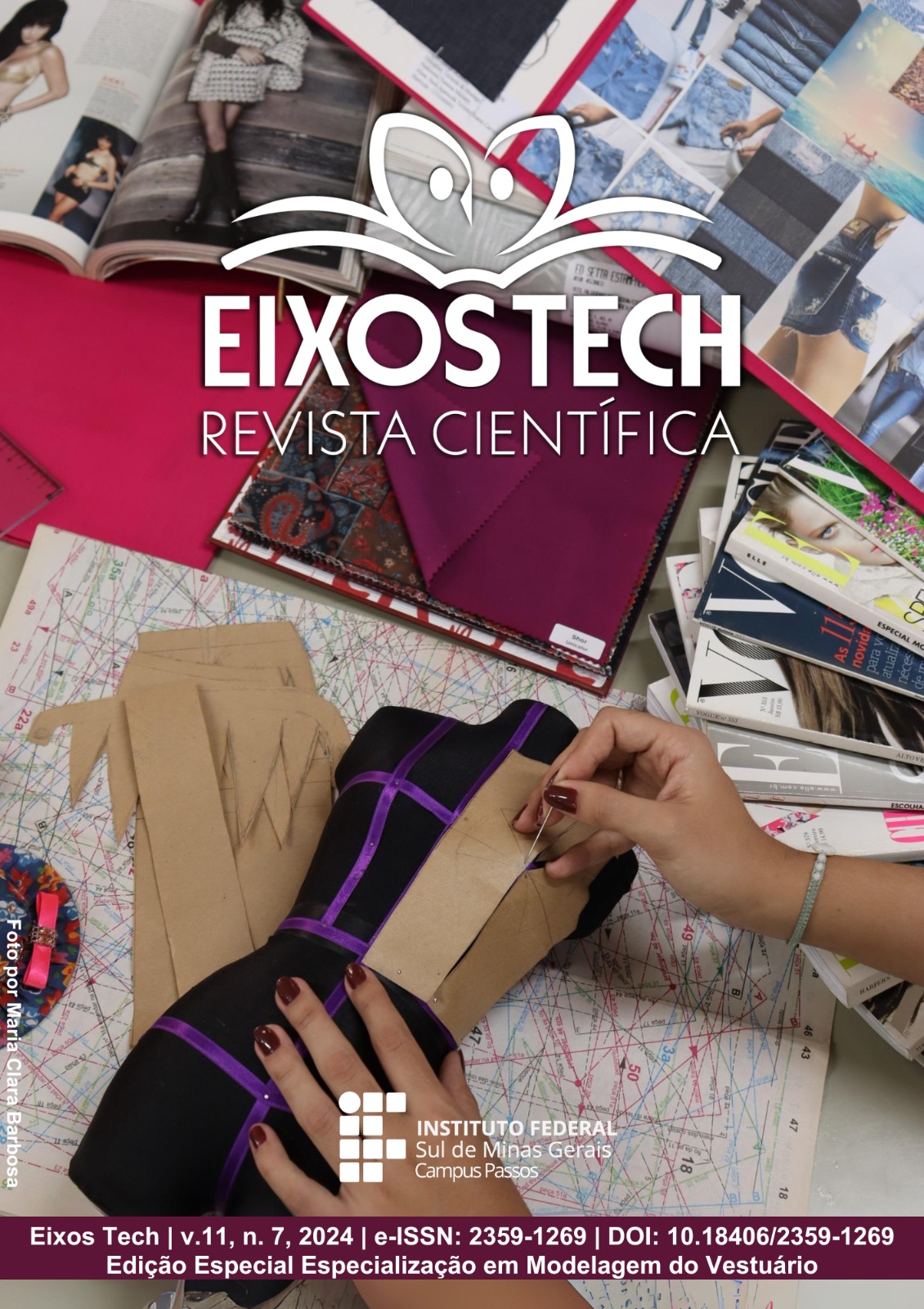From waste to design: the sashiko technique in the transformation of textile waste
DOI:
https://doi.org/10.18406/2359-1269v11n72024508Abstract
This study developed a prototype bag using the traditional sashiko technique to transform pre- consumer textile waste into a functional and aesthetically appealing product. The methodology was structured in five stages: material selection, design, technique application, assembly, and final finishes. The fabrics were chosen based on their durability and suitability for the technique, maximizing reuse and minimizing waste. The application of sashiko not only conferred aesthetic and cultural value to the piece but also enhanced its durability. The results show that incorporating traditional techniques in textile recovery can contribute to the principles of the circular economy, closing the waste cycle and demonstrating that the reuse of textile waste can result in quality products, aligning with sustainable design principles. The research suggests that large-scale adoption of these practices faces challenges but offers an innovative model for the fashion industry, promoting a sustainable and ethical future for artisans and small entrepreneurs.
Downloads
Published
How to Cite
Issue
Section
License
Copyright (c) 2025 Revista Eixos Tech

This work is licensed under a Creative Commons Attribution 4.0 International License.
A Revista Eixos Tech é um periódico científico de acesso aberto e gratuito.
A submissão de artigos e demais obras de comunicação científica para a Revista Eixos Tech implica plena aceitação pelo autor e pelos coautores da política de direitos autorais abaixo:
● Autor e coautores mantêm os direitos autorais e concedem à revista o direito de primeira publicação, com o trabalho simultaneamente licenciado sob a Licença Creative Commons Attribution, que permite o compartilhamento do trabalho com reconhecimento da autoria e publicação inicial nesta revista.
● Autor e coautores têm permissão e são estimulados a publicar e distribuir seu trabalho on-line (ex.: em repositórios institucionais ou na sua página pessoal) após seu aceite e publicação pela Revista Eixos Tech - mantendo o reconhecimento de autoria e publicação inicial nesta revista.
● Autor e coautores declaram que a obra é de autoria deles e responsabilizam-se por sua originalidade e pelas opiniões nela contidas.
● Após aceito e publicado o artigo, autor e coautores autorizam o editor a divulgar em mídias e modalidades de escolha do editor.
● O autor e os coautores resguardam os direitos autorais morais da obra publicada.


